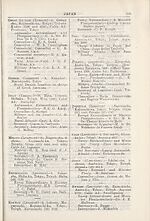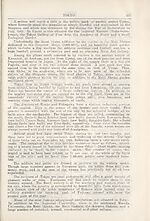1936
(278) Page 246 - Tokyo
Download files
Complete book:
Individual page:
Thumbnail gallery: Grid view | List view

246
JAPAN-TOKYO
Switzerland (Legation)—], Shimoni-
ban-cho, Kojimachi-ku
Minister—Walter Thurnheer
Chancellor—Ernest C. Pdbi
Secretary-Interpreter — Louis N.
Tanaka
Turkey (Embassy) — 47, Kamiyama-
machi, Shibuya-ku, Tokyo; Teleph.
Aoyama 4520
Ambassador Extraordinary and
Plenipotentiary and Charge
d’Affaires—H. E. Nebil
Union of Soviet Socialist Republics
(Embassy)—!, Mamianacho, Azabu-
bu, Tokyo; Teleph. Akasaka 0138,
0139 ; Cable Ad : Polpred
Ambassador—K. Yurenev
Trade Commissioner and Comm’l
Counsellor—Y. Kotchetoff
Military Attache—Ivam Rink
N aval Attache—A. Kovaleff
Consul General and 1st Secretary
—Y. Jelezniakoff
United States of America (Embassy)
—1, Enokizaka-machi, Akasaka-ku;
Telephs. Ikasaka (48) 0421-4, 0525 and
1409
Ambassador Extraordinary and
Plenipotentiary—Joseph Clark
Grew
Counsellor—Edwin L. Neville
First Secretary—Erie R. Dickover
Second Secretary—Edward S. Crocker
Third Secretaries — Cabot Coville
Morris N. Hughes and George
D. Andrews
Naval Attache—Capt. Fred F.
Rogers
Military Attache—Major William
C. Crane
Commercial Attache—Frank S.
Williams
Assistant Naval Attache—Lt. Ethel-
bert Watts.
Assist. Military Attache — Capt.
John Weckerling
TOKYO
The capital of Japan is situated on Tokyo Bay, bn the East coast of
Japan. The river Sumida runs through the city, the larger part lying to the
west of this waterway, while on the east lie the two wards named Honjo and
F ukagawa
Tokyo as viewed from the bay is a pleasant-looking city, being well situat¬
ed undulating ground, and possessing abundant foliage. The city covers 198
square miles and is divided into 35 wards.
In 1603, when lyeyasu became Shogun, he made Yedo, as it was then
called his capital, and from that time, in spite.of the earthquakes which
several times nearly destroyed it and the fires which ravaged it, the city con¬
tinued to grow until it exceeded Kyoto, the ancient capital, in population and
in splendour. The transfer of the Imperial Capital from Kyoto to Tokyo, as
it was then re-named, in 1868, brought increased prosperity to the city, and
from a population of a little more than 580,000 in 1878, it increased to
1,2:'.0,000 in 1888, to 1,140,000 in 1898, and to 2,170,000 in 1920 when the first national
census was taken. According to an estimate made by city officials during 1934 the
population was 5,663,350.
Tokyo is one of the three cities in Japan which stands in a prefecture;by
itself, with a Governor appointed by the Central Government. The city itself
is governed by a Mayor and a Municipality, Which now has control over most
of the public utilities, including the water aiid electric supplies, and the
tramways. Of recent years the feudal aspect of Tokyo has almost entirely
disanpeared, the streets having been widened so as to permit of modern traffic
conditions. Many fine buildings have also been erected, such as the Imperial
Theatre, one of the finest in the Far East, the Imperial Hotel and large
blocks of business houses. Tokyo Central Station situated in the heart of the
business quarters, is now connected with all the main lines in Japan, thus
adding to the convenience of passengets.
JAPAN-TOKYO
Switzerland (Legation)—], Shimoni-
ban-cho, Kojimachi-ku
Minister—Walter Thurnheer
Chancellor—Ernest C. Pdbi
Secretary-Interpreter — Louis N.
Tanaka
Turkey (Embassy) — 47, Kamiyama-
machi, Shibuya-ku, Tokyo; Teleph.
Aoyama 4520
Ambassador Extraordinary and
Plenipotentiary and Charge
d’Affaires—H. E. Nebil
Union of Soviet Socialist Republics
(Embassy)—!, Mamianacho, Azabu-
bu, Tokyo; Teleph. Akasaka 0138,
0139 ; Cable Ad : Polpred
Ambassador—K. Yurenev
Trade Commissioner and Comm’l
Counsellor—Y. Kotchetoff
Military Attache—Ivam Rink
N aval Attache—A. Kovaleff
Consul General and 1st Secretary
—Y. Jelezniakoff
United States of America (Embassy)
—1, Enokizaka-machi, Akasaka-ku;
Telephs. Ikasaka (48) 0421-4, 0525 and
1409
Ambassador Extraordinary and
Plenipotentiary—Joseph Clark
Grew
Counsellor—Edwin L. Neville
First Secretary—Erie R. Dickover
Second Secretary—Edward S. Crocker
Third Secretaries — Cabot Coville
Morris N. Hughes and George
D. Andrews
Naval Attache—Capt. Fred F.
Rogers
Military Attache—Major William
C. Crane
Commercial Attache—Frank S.
Williams
Assistant Naval Attache—Lt. Ethel-
bert Watts.
Assist. Military Attache — Capt.
John Weckerling
TOKYO
The capital of Japan is situated on Tokyo Bay, bn the East coast of
Japan. The river Sumida runs through the city, the larger part lying to the
west of this waterway, while on the east lie the two wards named Honjo and
F ukagawa
Tokyo as viewed from the bay is a pleasant-looking city, being well situat¬
ed undulating ground, and possessing abundant foliage. The city covers 198
square miles and is divided into 35 wards.
In 1603, when lyeyasu became Shogun, he made Yedo, as it was then
called his capital, and from that time, in spite.of the earthquakes which
several times nearly destroyed it and the fires which ravaged it, the city con¬
tinued to grow until it exceeded Kyoto, the ancient capital, in population and
in splendour. The transfer of the Imperial Capital from Kyoto to Tokyo, as
it was then re-named, in 1868, brought increased prosperity to the city, and
from a population of a little more than 580,000 in 1878, it increased to
1,2:'.0,000 in 1888, to 1,140,000 in 1898, and to 2,170,000 in 1920 when the first national
census was taken. According to an estimate made by city officials during 1934 the
population was 5,663,350.
Tokyo is one of the three cities in Japan which stands in a prefecture;by
itself, with a Governor appointed by the Central Government. The city itself
is governed by a Mayor and a Municipality, Which now has control over most
of the public utilities, including the water aiid electric supplies, and the
tramways. Of recent years the feudal aspect of Tokyo has almost entirely
disanpeared, the streets having been widened so as to permit of modern traffic
conditions. Many fine buildings have also been erected, such as the Imperial
Theatre, one of the finest in the Far East, the Imperial Hotel and large
blocks of business houses. Tokyo Central Station situated in the heart of the
business quarters, is now connected with all the main lines in Japan, thus
adding to the convenience of passengets.
Set display mode to:
![]() Universal Viewer |
Universal Viewer | ![]() Mirador |
Large image | Transcription
Mirador |
Large image | Transcription
Images and transcriptions on this page, including medium image downloads, may be used under the Creative Commons Attribution 4.0 International Licence unless otherwise stated. ![]()
| Asian directories and chronicles > 1936 > (278) Page 246 - Tokyo |
|---|
| Permanent URL | https://digital.nls.uk/201363701 |
|---|
| Attribution and copyright: |
|
|---|---|
| Description | Volumes from the Asian 'Directory and Chronicle' series covering 1917-1941, but missing 1919 and 1923. Compiled annually from a multiplicity of local sources and research. They provide listings of each country's active corporations, foreign residents and government agencies of all nationalities for that year, together with their addresses. Content includes: various treaties; coverage of conflicts; currencies and taxes; consular fees; weights and measures; public holidays; festivals and traditions. A source of information for both Western states and communities of foreigners living in Asia. Published by Hongkong Daily Press. |
|---|---|
| Shelfmark | H3.86.1303 |
| Additional NLS resources: |

